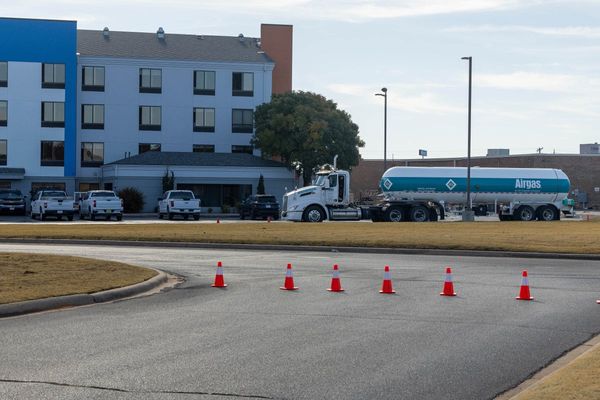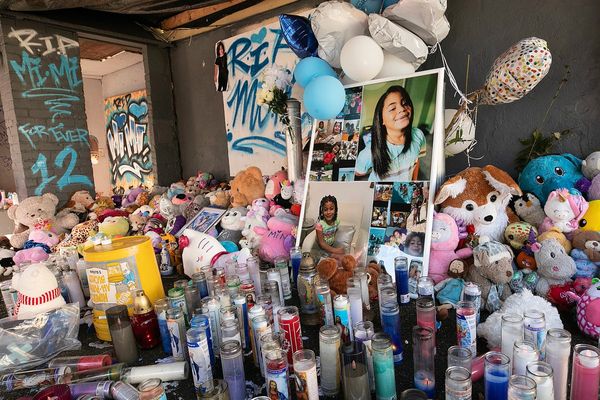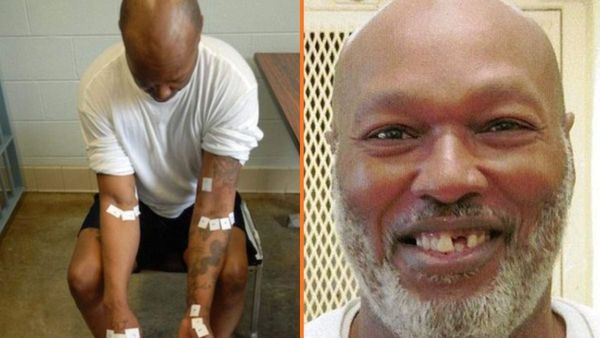(Bloomberg Businessweek) -- In late September a group of businessmen and economic development officials from Michigan made a sort of urban pilgrimage to downtown Seattle. They walked the streets, starting at the three spherical glass buildings that recently opened as part of the headquarters of Amazon.com Inc. Their goal: to learn how the company had transformed the city. “We didn’t feel like there was any other way for us to get a sense of what makes Seattle special without actually going there and seeing it firsthand,” says Cory Tincher, director for special projects at Rock Ventures LLC, who made the trip.
The reconnaissance was part of an effort by Detroit to land Amazon’s second headquarters, HQ2 for short. Weeks earlier the company had asked for pitches from cities in North America interested in hosting a campus with enough room for 50,000 employees. This, predictably, set off a frenzy, pitting New York, Austin, and other locales with well-established technology sectors against long shots such as Vallejo, Calif. It also put a spotlight on Seattle, where Amazon remade a previously out-of-favor neighborhood, South Lake Union, into a home for its swelling workforce.
As Tincher passed through Amazon’s squat, workaday campus, with buildings named Nessie and Bigfoot, he was impressed by how much they blended into their surroundings. There weren’t many signs announcing the company’s presence. When Tincher did find one, he jotted down notes, trying to reverse-engineer design choices that Detroit could adopt to win over the company’s chief executive officer, Jeff Bezos. Unwittingly, he was also studying the work of another local billionaire: Paul Allen.
Most people know Allen as the guy who co-founded Microsoft Corp. with his high school buddy, Bill Gates. But later on he amassed a second fortune in real estate. His company, Vulcan Inc., has built much of Amazon’s Seattle campus, which now occupies about a fifth of the city’s prime office space, as well as a whole neighborhood of apartments, restaurants, and shops. Allen has also put up biomedical research facilities, and he’s developing giant office buildings for Amazon peers Google and Facebook.
He’s done well from all this—according to a Bloomberg analysis, his projects have an estimated value of about $6 billion—and, by some accounts, so too has Seattle. Vulcan’s properties form the core of a tech hub that’s generated $200 million in tax revenue since 2004. Amazon’s headquarters employs 45,000 people locally; the company says it’s created an additional 53,000 jobs, helping push Seattle’s unemployment rate below 4 percent.
This has made the city seem like a model for urban revitalization, a sort of developer’s Valhalla. And yet, as cities try to crib from Seattle, the town itself is full of doubt and anger. The turbocharged growth has exacerbated traffic, despite huge investments in public transit. Housing prices have shot up faster than in any major city in the U.S. for most of the past two years. Homelessness has reached crisis levels. Formerly subdued City Council meetings routinely devolve into shouting matches.
This backlash has had the paradoxical effect of making everything in Seattle, a city at the height of its power and prominence, feel a bit fragile. Business groups fear Bezos may someday favor HQ2 over the original. In August the city erupted in protest after a developer proposed knocking down the iconic Showbox theater, where artists from Pearl Jam to Muddy Waters have played, to make way for a 44-story apartment tower that would probably house tech workers. On the wall of a major highway tunnel downtown, someone spray-painted, in 5-foot-tall block letters: F--- BEZOS.
Some of the anger in Seattle stems from the fact that much of South Lake Union could have been a park. In 1991 a series of columns in the Seattle Times proposed building a giant green space that would extend from downtown a mile north to Lake Union, a large body of water in the middle of the city. An article waxed poetically about the possibility of “whispering firs” and “a brand-new salmon run.” Soon, prominent citizens formed the nonprofit Seattle Commons Committee, which developed a plan for a residential and commercial neighborhood with homes for 15,000 people surrounding a 74-acre park. The City Council and the mayor eventually endorsed it.
For most of the city’s history, South Lake Union had been a light-industrial zone. William Boeing used the lake as a runway for his early float planes, and Henry Ford built Model Ts in the neighborhood. But by the 1990s it was a pedestrian-free warren of parking lots and warehouses. One main attraction: a strip club known for its marquee touting “100s OF BEAUTIFUL GIRLS AND 3 UGLY ONES.”
As the park plan got more attention, backers approached Allen, who’d left Microsoft during a bout with cancer and refashioned himself as a technology and telecom investor, for help. He agreed in 1992 to lend $20 million to start purchasing property. But the need to raise an additional $111 million from taxpayers made the project controversial. Voters, worried about traffic and the displacement of small businesses, rejected the proposal twice.
Allen hasn’t been particularly effective as an investor. He’s known chiefly for his failed effort with Charter Communications Inc. and for buying sports teams. The park seemed like another miss, leaving Allen with 11.5 acres in South Lake Union and no clear plan. But he kept buying land and, in 2001, hired Ada Healey, a real estate executive who’d moved to Seattle a few years earlier. Allen had property in other parts of the region, but Healey’s main job was to start developing buildings in South Lake Union and sell the neighborhood to businesses that still considered the area a no man’s land.
In a city largely settled by reticent Scandinavian immigrants, newcomers often complain about struggling to overcome the “Seattle freeze” when they try to make friends with locals. Healey, who’s originally from Georgia, had a big vision and an outgoing personality that won over tenants such as Merck & Co. To keep the neighborhood from going dead at 5 p.m., she brought in shops and restaurants and pushed for the city to build a streetcar to connect the neighborhood to downtown. (Locals nicknamed it the SLUT; an urban legend said it was initially named the South Lake Union Trolley.) Vulcan also made sidewalks wider in places and restored some old buildings. “Our efforts were really around taking the historic roots here and advancing them,” Healey says. People started calling the area “Allentown.”
The moniker would be short-lived. In 2007, Amazon, which was outgrowing its main office in a former medical clinic south of downtown, asked Vulcan to build a 1.7 million-square-foot headquarters in South Lake Union. Over the next decade, Vulcan put up an additional 1 million square feet for Bezos. Properties that were initially leased to tenants including Microsoft and Tommy Bahama, the Hawaiian shirt manufacturer, were snatched up by Amazon, too. Today it occupies some 8.1 million square feet in the city, a figure that includes several buildings it bought from Vulcan for $1.2 billion. Allen has also sold an additional $2.5 billion in properties and used the money to fund more development in South Lake Union, including the offices for Facebook and Google.
The concentration of Allen’s land holdings, which by 2004 covered more than 60 acres in the neighborhood, made them perfectly suited to Amazon’s goal of moving its entire workforce to a single urban area. It was a “once-in-a-lifetime” opportunity to build a neighborhood in the middle of a city, says John Schoettler, Amazon’s vice president for real estate. The neighborhood also had more mundane advantages, including that Allen’s team already had building permits, he says. “I don’t think they initially thought there’d be a tenant that would take up most everything all at once,” Schoettler says. “But that was a boon for them and certainly played well for us.” Office rents in South Lake Union are now higher than in Seattle’s central business district. Despite all this momentum, Healey says she still has to pitch the neighborhood to potential tenants: “It’s not like we open the windows, and the birds fly in.”
A neighborhood full of offices might not seem like much of an attraction, but South Lake Union has undoubtedly increased the city’s appeal. More than 114,000 people have moved to Seattle since 2010, increasing the population by 19 percent and making it the fastest-growing big city in the U.S. this decade. There haven’t been nearly enough new places for them to live, leading to steep increases in housing costs in a city poorly equipped to absorb people.
About two-thirds of Seattle’s residential properties are single-family homes. (Similar tech-centric cities are much denser; for instance, in Boston, single-family homes account for just 14 percent of the housing stock.) Seattle homeowners have vigorously fought changes to zoning laws that would increase density on the grounds that it would alter the character of neighborhoods filled with picturesque (if small) craftsman-style bungalows. The Nimby-ism has led to scarcity and bidding wars, driving the median home price to $805,000 in July. In some areas once populated by Boeing machinists, houses routinely fetch more than $1 million. And developers have generally prioritized offices and high-end homes over more affordable housing in recent years, exacerbating the imbalance between supply and demand. A poll published in May showed that the soaring cost of living had overtaken traffic as residents’ most-hated part of life in greater Seattle.
Nowhere is this felt more acutely than the Central District, a neighborhood about 2 miles from South Lake Union that was historically the center of the city’s black population and where Allen and Healey are mounting one of their next acts. In February, Vulcan razed the Promenade Red Apple, a beloved grocery store that carried hard-to-find items such as pig’s feet and cracklins, to make room for a market and an apartment complex that will take up an entire square block. A fifth of the development’s 532 units are classified as “affordable”—so the project can qualify for tax breaks—but that only means a one-bedroom will rent for $1,505 a month to a single person making as much as $52,650 a year, according to the limits stipulated by the city.
“It’s affordable housing—for tech workers,” says Preston Hampton, an activist who worked on design guidelines for buildings in the neighborhood. Hampton says pricey housing has helped cause the black population of the Central District to plummet from more than 70 percent in the 1960s to less than 20 percent today. But cost isn’t the only problem. Hampton cites an instance when some newcomers called the police on a group of black teenagers who were playing dominoes on their porch, assuming the kids were up to no good. “The question is, do you belong?” Hampton says. “The more upscale it looks, the more people are going to feel like they don’t.”
Healey acknowledges the critique but argues that building homes for lower-income people just can’t be done profitably in a boomtown like Seattle, because of high construction costs. Allen, she notes, has donated money to fight homelessness. Vulcan has also tried to adjust projects in response to community input by including, for instance, “micro” retail spaces meant to attract neighborhood businesses. Activists say these efforts have done little to mitigate the effects of gentrification, and they’re concerned that Vulcan is trying its playbook in new areas. South Lake Union, says artist Julie Chang Schulman, is “not a neighborhood that we connect with or see as reflective of the diversity and creativity of Seattle.”
City officials bear some of the blame for skyrocketing housing costs. Greg Nickels, mayor from 2002 to 2010, pushed many policies that led to the boom but now says it’d be healthier if the city were growing slower. “One of the big challenges with growth is to not allow it to overwhelm you,” he says. “We wanted to be a place that had good-paying jobs that didn’t require a Ph.D. in physics. That’s going to become harder and harder.”
Amazon’s Schoettler describes the anxiety as growing pains. The company has donated tens of millions of dollars to develop affordable housing, provided free space in its buildings to local nonprofits, and bought a new streetcar for the SLUT line. “Inevitably, creating a world-class city that is a place that can be the envy, of not only the locals but of the outside world, is not going to happen without change and without development,” he says.
Detroit didn’t make the initial cut in Amazon’s HQ2 competition. That came as a blow to Tincher and his boss, Dan Gilbert, the billionaire founder of Quicken Loans Inc. Like Allen, he’s been refashioning his city’s downtown into a place that appeals to fast-growing, innovative businesses. “Obviously, we are all disappointed,” Gilbert tweeted after Amazon culled the list to 20 finalists in January. “No doubt our best days are ahead of us. There are numerous large and small deals you will continue to see develop into reality in the months and years ahead. Next.”
With Amazon’s decision expected later this year, the cities still in contention are battling furiously, offering tax breaks and incentives that will cost billions of dollars. Meanwhile, the company has been pressing the finalists to describe how they’ll cope with housing affordability and traffic, a sign that it’s wary of becoming a scapegoat wherever it sets down roots.
All this suggests that the bragging rights of landing the deal could be quickly followed by a pit-in-the-stomach moment once residents learn what’s gone on in Amazon’s hometown. Seattle has had the “jubilation of great success,” says Richard Florida, an urban studies professor at the University of Toronto. Now the city’s “getting punched in the face with it.” —With Tom Metcalf and Jeremy CF Lin
To contact the authors of this story: Noah Buhayar in Seattle at nbuhayar@bloomberg.netDina Bass in Seattle at dbass2@bloomberg.net
To contact the editor responsible for this story: Miranda Purves at mirandap@earthlink.net, Max Chafkin
©2018 Bloomberg L.P.







